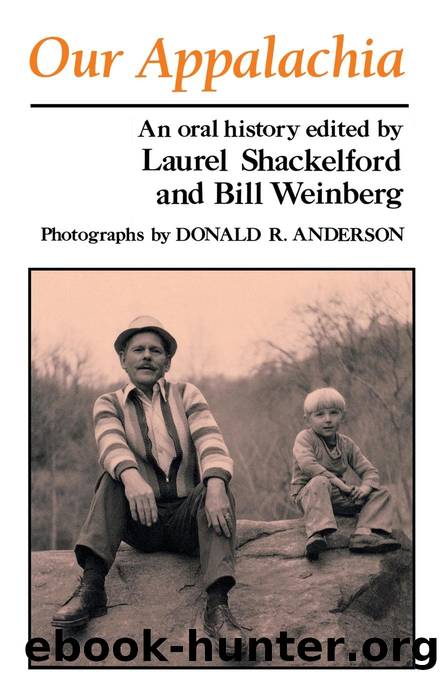Our Appalachia by unknow

Author:unknow
Language: eng
Format: epub
Publisher: University Press of Kentucky
Published: 2021-08-15T00:00:00+00:00
Frances Turner
Usually the camp was segregated not only as to the quality of the housing; it was also segregated as to ethnic background. The Italian camp at Weeksbury was called âYellow Flats.â All [the] houses in the camp were painted in a variety of colorsâpink, green, whiteâto break the monotony, but these little stucco cottages [where] all of the Italians lived were all yellow. Then, there [were] the Polish, although it embarrasses me to say that the Polish for some reason always carried the name âHunkieâ and the Czechoslovakians were thrown in. Iâm sure it was our ignorance, that we werenât even aware of the difference [between] the Hungarians, the Czechoslovakians, and the Polish people.
The Italians always seemed to become a tightly organized group and cling together more than the other three groups. I would assume that the Czechoslovakians, the Polish, the Yugoslavians, the Hungarians, were a [larger] group and they probably integrated with the natives more quickly than the Italians who were more clannish by nature. They adopted our customs much more slowly. They held to their own festivals, their own religious services, their own foods much longer than the other groups. I knew of very little, if any, friction in these coal camps although I would have to admit that each ethnic group provided more or less [its] own amusement, unless it was the theater, or a band concert, or something that was open.
The Negroes came in a little later and they, primarily, were all from Alabama. They also had their own camps. I remember very little fraternization other than many of the black women [worked] for the officialsâ wives, certainly not because they had to because they had the same advantages as anybody else as far as the opportunity to make money. They could do anything, but I never ever remember seeing them in the soda fountain, and they had their own church, and their own school, also provided by the company.
There was always in every camp I ever lived in a movie house. The whites sat in the left section, the middle section, the balcony; the Negroes all sat in the right section. Usually the company did not operate the movie house themselves; it was given as a little fringe benefit to the superintendent who in turn re-leased it or hired someone to operate it. So, there were movies in the coal camps far earlier than there were movies in the local towns. This was a way of keeping these people content and happy because they did not want to lose labor.
The company also employed the doctor and had its own doctorâs office [with] all the emergency equipment in it. It was better equipment than the local hospitals [had] because, again, [it] was maintained by the company. The doctor was on twenty-four-hour call. The only thing the miner paid him was two dollars a month and this included medical expenses, medication, child delivery, the whole package. Many excellent doctors came into eastern Kentucky who were just out of medical school because it was a good way to get yourself out of debt and move on.
Download
This site does not store any files on its server. We only index and link to content provided by other sites. Please contact the content providers to delete copyright contents if any and email us, we'll remove relevant links or contents immediately.
| China | India & South Asia |
| Japan |
Fanny Burney by Claire Harman(26529)
Empire of the Sikhs by Patwant Singh(22978)
Out of India by Michael Foss(16792)
Leonardo da Vinci by Walter Isaacson(13189)
Small Great Things by Jodi Picoult(7024)
The Six Wives Of Henry VIII (WOMEN IN HISTORY) by Fraser Antonia(5398)
The Wind in My Hair by Masih Alinejad(5034)
A Higher Loyalty: Truth, Lies, and Leadership by James Comey(4851)
The Lonely City by Olivia Laing(4751)
The Crown by Robert Lacey(4731)
Millionaire: The Philanderer, Gambler, and Duelist Who Invented Modern Finance by Janet Gleeson(4386)
The Iron Duke by The Iron Duke(4293)
Papillon (English) by Henri Charrière(4199)
Sticky Fingers by Joe Hagan(4105)
Joan of Arc by Mary Gordon(4017)
Alive: The Story of the Andes Survivors by Piers Paul Read(3970)
Stalin by Stephen Kotkin(3883)
Aleister Crowley: The Biography by Tobias Churton(3589)
Ants Among Elephants by Sujatha Gidla(3417)
